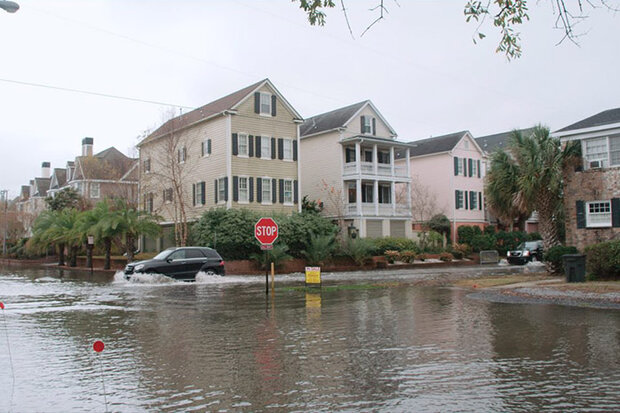Study finds Atlantic Meridional Overturning Circulation increases flood risk along the United States southeastern coast


Nuisance flooding is a growing problem for parts of the United States. Credit: NOAA
Sea level rise is one of the most challenging consequences of global warming. A new collaborative study led by Dr. Denis Volkov from NOAA-AOML and the University of Miami’s Cooperative Institute of Marine and Atmospheric Studies found that Atlantic Meridional Overturning Circulation (AMOC) induced changes in basin-wide ocean heat content are influencing the frequency of floods along the United States southeastern coast.
The meridional overturning circulation is a system of ocean currents that moves heat, salt, freshwater, and other properties around the Earth and throughout the global climate system. There is a surplus of heat in the tropics relative to the poles due to incoming solar radiation. The ocean, specifically the AMOC, plays a key role in transporting this heat to the subpolar North Atlantic, thus regulating global and regional climate, weather, and sea levels.
As polar ice sheets continue to melt and ocean warming intensifies, sea levels are projected to rise by over half a meter by the end of the century. Due to oceanic and atmospheric conditions, sea level changes vary by location, with some regions rising much faster than the global average. The U.S. east coast has been identified as a hotspot for accelerated sea level rise in the North Atlantic.